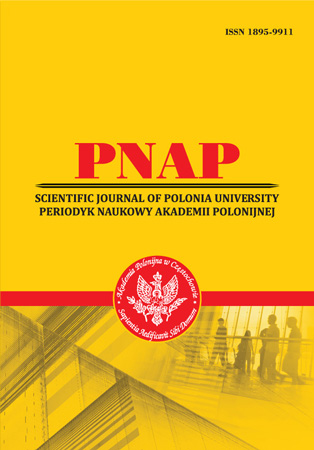PROGNOSTIC CLINICAL, MORPHOLOGICAL AND IMMUNOHISTOCHEMICAL MARKERS OF LOW-GRADE SEROUS OVARIAN CARCINOMAS OF WOMEN WITH SEROUS BORDERLINE TUMORS IN ANAMNESIS
Abstract
The problem of finding reliable clinical and morphological criteria for diagnosis and prognosis of serous borderline ovarian tumors, their relationship with the risk of developing of low-grade serous ovarian carcinomas (LGSC) in future is still relevant. This study is devoted to research and highlight of precursors that allow dividing women with serous borderline ovarian tumors (SBOT) into risk group for occurrence of LGSC within next 5 years. The study included 22 patients with FIGO stage I-II SBOT aged 24 to 46 years, 9 (39.13%) of whom were diagnosed with high-grade serous ovarian carcinoma next 5 years. Two study groups were formed: the control group (n = 13), which included patients with SBOT without further development of LGSC, and the main group (n = 9), which included women with emerging LGSCs. We studied expression of immunohistochemical markers Ki-67, MMP-9, p53, Bcl-2, E-cadherin, and also a diameter and localization of the tumor. As a result of the study, it was found that patients with diameter of the SBOT≥10 cm (χ² = 6.0, p <0.03), FIGO stage II (χ² = 4.7, p <0.03) and Ki-67 expression ≥10% (χ² = 9.03, p <0.03) have a high risk of developing LGSC within next 5 years. In the group of women who underwent LGSC development, there was a tendency to more pronounced expression of MMP-9 (χ² = 4.18, p <0.04) and moderate and pronounced expression of Bcl-2 (χ² = 9.66, p = 0.008). According to our data, markers Ki-67, MMP-9, Bcl-2 are prognostic and can be used as markers of LGSC risk in women with a history of SBOT. Tumor diameter ≥10 cm is also a predictor.
References
Corney D.C., Flesken-Nikitin A., Jinhyang C. & Nikitin A. Yu. (2008). Role of p53 and Rb in ovarian cancer. Advances in Experimental Medicine and Biology, 622, 99–117. doi:10.1007/978-0-387-68969-2_9
Davydova I. Yu., CHekalova M. A., Karseladze A. I., Kuznecov V. V., Meshcheryakova L. A., Dedy T. V., CHerkasov E. Yu. & Zharova A. S. (2021). Seroznye pogranichnye opuholi yaichnikov: sovremennye vozmozhnosti ul'trazvukovoj diagnostiki v monitoringe techeniya bolezni posle organosohranyayushchih operacij [Serous borderline ovarian tumors: modern possibilities of ultrasound diagnostics in monitoring the course of the disease after organ-preserving operations]. Modern onkology, 23 (1), 106-111. Moskow: Konsilium Medikum. [in Russian] doi: 10.26442/18151434.2021.1.200578
Gottwald L., Spych M., Kubiak R., Pasz-Walczak G., Piekarski J., Jeziorski A., Sęk P., Szwalski J., Suzin J. & Tyliński W. (2013). The value of Ki-67 antigen expression in tissue microarray method in prediction prognosis of patients with endometrioid endometrial cancer. Ginekologia Polska, 84(6), 444–449. doi: 10.17772/GP/1602
Grimm F. , Maurus R., Beschorner R., Naros G., Stanojevic M., Gugel I., Giese S., Bier G., Bender B. & Honegger J. (2019). Ki-67 labeling index and expression of p53 are non-predictive for invasiveness and tumor size in functional and nonfunctional pituitary adenomas. Acta Neurochirurgica, 161(6), 1149–1156. doi: 10.1007/S00701-019-03879-4
Hauptmann, S., Friedrich K., Redline R., & Avril S. (2017). Ovarian borderline tumors in the 2014 WHO classification: evolving concepts and diagnostic criteria. In Virchows Archiv, 470 (2), 25–142. doi: 10.1007/s00428-016-2040-8
Herrington, C. S. (Ed.), & Editorial Board, WHO. C. O. T. (2020). WHO Classification of Tumours Female Genital Tumours. (5th ed.),38-44. Lyon (France): International Agency for Research on Cancer.
Huang H. (2018). Matrix Metalloproteinase-9 (MMP-9) as a Cancer Biomarker and MMP-9 Biosensors: Recent Advances. Sensors (Basel, Switzerland), 18(10), 3249-3268. doi: 10.3390/ S18103249
Jin S. (2005). p53, Autophagy and tumor suppression. Autophagy, 1(3), 171–173. doi: 10.4161/AUTO.1.3.2051
Kaygusuz E. I., Çetiner H. & Şahin D. (2011). P53, bcl-2, and nm23 expressions in serous ovarian tumors: correlation with the clinical and histopathological parameters. Turk Patoloji Dergisi, 27(1), 38–45. doi: 10.5146/TJPATH.2010.01045
Li L.T., Jiang G, Chen Q. & Zheng J. N. (2015). Ki67 is a promising molecular target in the diagnosis of cancer (review). Molecular Medicine Reports, 11(3), 1566–1572. doi: 10.3892/MMR.2014.2914
Lowe K.,Khithani A.S., Liu E.T.,Winston T.L., Christian D., Saad J. & Jeyarajah D. R. (2012). Ki-67 labeling: a more sensitive indicator of malignant phenotype than mitotic count or tumor size? Journal of Surgical Oncology, 106(6), 724–727. doi: 10.1002/JSO.23124
Menon S.S., Guruvayoorappan C., Sakthivel K. M., Rasmi R. R. (2019). Ki-67 protein as a tumour proliferation marker. Clinica Chimica Acta; International Journal of Clinical Chemistry, 491, 39–45. doi: 10.1016/J.CCA.2019.01.011
Ozer H. , Yenicesu G. , Arici S., Cetin M., Tuncer E. & Cetin A. (2012). Immunohistochemistry with apoptotic-antiapoptotic proteins (p53, p21, bax, bcl-2), c-kit, telomerase, and metallothionein as a diagnostic aid in benign, borderline, and malignant serous and mucinous ovarian tumors. Diagnostic Pathology, 7, 124. doi: 10.1186/1746-1596-7-124
Pârvănescu V., Georgescu M., Georgescu I., Șurlin V., Pătraşcu Ș., Picleanu A. M. & Georgescu E. (2015). The Role of Matrix Metalloproteinase-9 (MMP-9) as a Prognostic Factor in Epithelial and Lymphatic Neoplasia. Chirurgia, 110(6), 506–510. Retrieved from https://pubmed.ncbi.nlm.nih.gov/26713823/
Sakata K., Shigemasa K., Nagai N. & Ohama K. (2000). Expression of matrix metalloproteinases (MMP-2, MMP-9, MT1-MMP) and their inhibitors (TIMP-1, TIMP-2) in common epithelial tumors of the ovary. International journal of oncology, 17(4), 673-81. Retrieved from https://pubmed.ncbi.nlm.nih.gov/10995877/
Sun X. & Kaufman P. D. (2018). Ki-67: more than a proliferation marker. Chromosoma, 127, 175–186. doi: 10.1007/s00412-018-0659-8
Yu N., Wang N., Liu Y.F., Li Y. Y. & Zhang T.G. (2017). Expression and clinical significance of Ki-67, E-cadherin, and mesothelin in serous borderline ovarian tumor. European journal of gynaecological pathology, 38(1), 85-90. Retrieved from https://pubmed.ncbi.nlm.nih.gov/29767871/
Zeren T., Inan S., Vatansever H. S. & Sayhan S. (2014). Significance of apoptosis related proteins on malignant transformation of ovarian tumors: A comparison between Bcl-2/Bax ratio and p53 immunoreactivity. Acta Histochemica, 116(8), 1251–1258. doi: 10.1016/J.ACTHIS.2014.07.007
Abstract views: 220 PDF Downloads: 150







